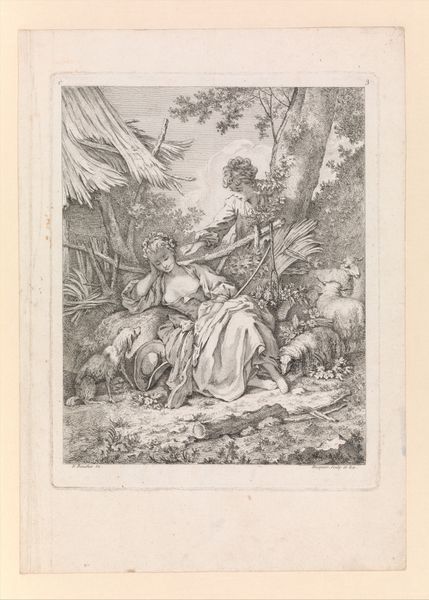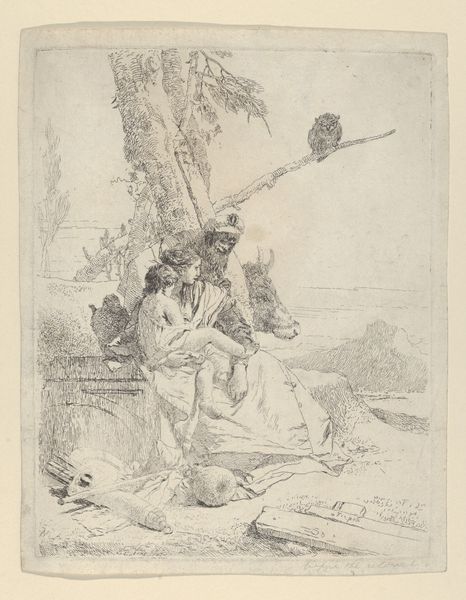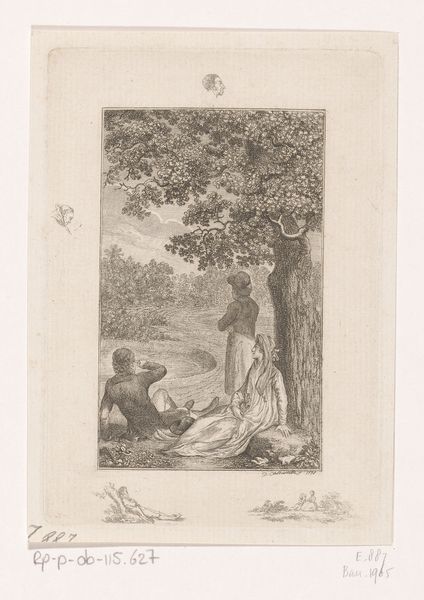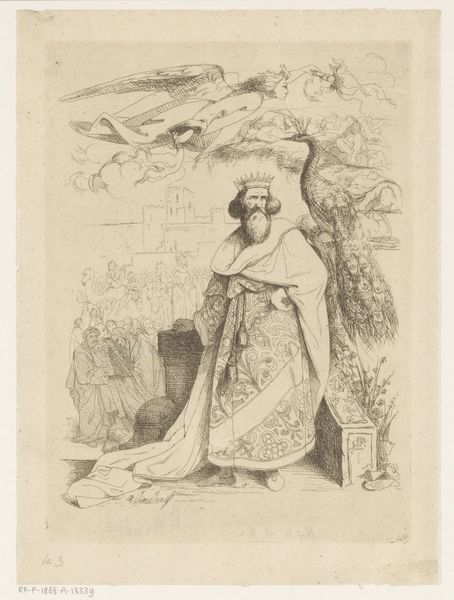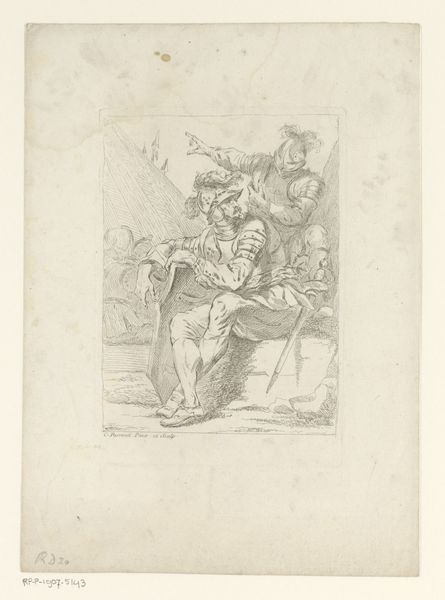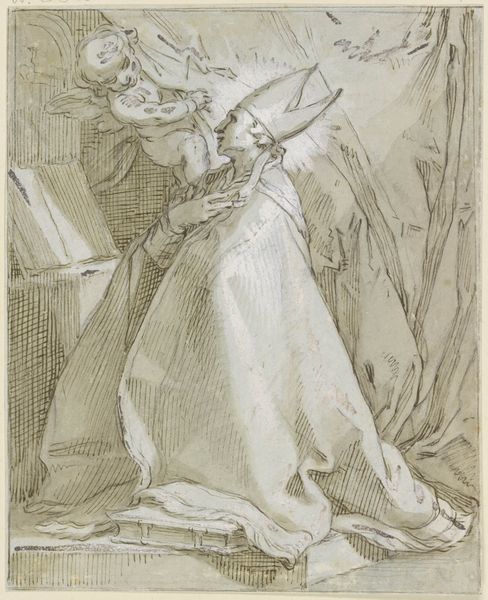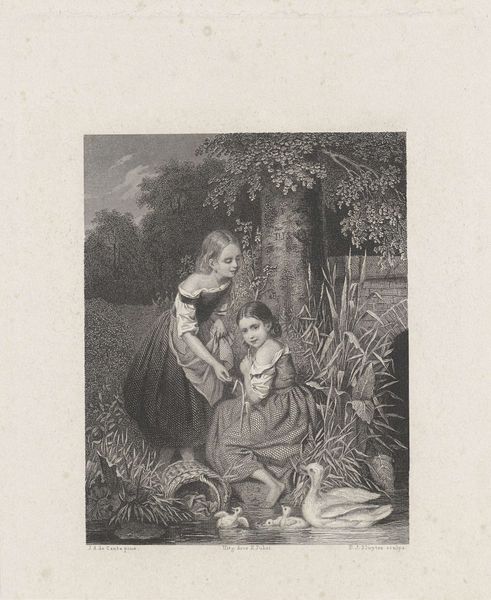
drawing, pencil
#
portrait
#
drawing
#
pencil sketch
#
pencil
#
academic-art
#
realism
Dimensions: height 359 mm, width 238 mm
Copyright: Rijks Museum: Open Domain
Curator: What strikes me first is how light the image feels, almost ephemeral. Editor: Let’s take a closer look at “Jonge vrouw in een stoel bladert door een prentenmap” by Willem Geets, believed to have been created sometime between 1848 and 1910. The medium is pencil on paper. Curator: Yes, and the material fragility really resonates. Look at the delicate strokes defining the gown and how it seems to spill off the chair. It speaks to a particular kind of leisured femininity, doesn't it? The paper is almost gossamer thin! Editor: I’m more drawn to how the image portrays class. We can observe this through the craftsmanship of her garment and furniture—materials acquired from someone certainly immersed within a specific societal bubble. This scene is constructed within the framework of capitalist exchange. Curator: You bring up an interesting point. How do you think that the ‘academic art’ style classification fits within a historical moment concerning art, culture, and society? Does this portrayal of women in that setting serve certain purposes or power structures within societal systems? Editor: Well, the prevalence of portraiture served those who commissioned the works: affluent, with available wealth and property. That alone implies so much. This work, in its specific process and material application, depicts power relations. Pencil drawing enables a certain reproducibility through prints that more immediate art such as oil doesn't allow. The 'pencil sketch' could be drafted by other labor. The social implications must be highlighted when decoding these works. Curator: Agreed. There's an undercurrent to its visual pleasure. The image making allows for an analysis into its own process of becoming. Editor: Exactly! So often formal qualities distract from the circumstances that gave it the power to be "art." This work provides evidence to consider history from many aspects. Curator: Indeed. It really forces one to look beyond the surface aesthetics to understand its deeper cultural and material context.
Comments
No comments
Be the first to comment and join the conversation on the ultimate creative platform.
